
“I photograph to see what things look like photographed.” Garry Winogrand
One of the things I appreciate about photography is that it gives you permission to look. Most of the time I don’t. I’m usually operating on auto-pilot, oblivious to anything around me except something that’s outside normal expectations. I suspect we all live this way, conserving our limited attention for when evolution had bred in us a need – fight/flight, sex, food. What about our aesthetic sense – which evolution has clearly prioritized as a basic human need? How might we indulge a sense of beauty? Does being a photographer assist in some way? I think it does.
Garry Winogrand was onto something when he decided to photograph things to see what they looked like when photographed. He was one of the first photographers to recognize the camera’s potential to make us see things. It both gives us permission to look and creates new visual realities, showing us things we otherwise wouldn’t see. The nice thing about the digital age is I now always carry a camera with me, which allows me to always be looking at things in terms of what they might look like photographed. Back in the film era, that really wasn’t possible, unless you were a lunatic like Winogrand who left behind 6500 unprocessed rolls of film at his death. Today, all you need is your iPhone and some attention. Winogrand would have gone nuts with an iphone.
Think of photography as a means to discover things, a way of saying “Look at what I saw!’ Often times (not always) it’s not so much a way of documenting what is but rather discovering new ways things might look if you leave yourself open to it. And because it’s about leaving yourself open to seeing how things might look, everything is opened up to you as a subject. An afternoon walk with the dogs and an iPhone can become an exercise in seeing things. This is a profound gift digital photography gives us. It turns a routine walk into an aesthetic experience…if we let it. That’s pretty cool.
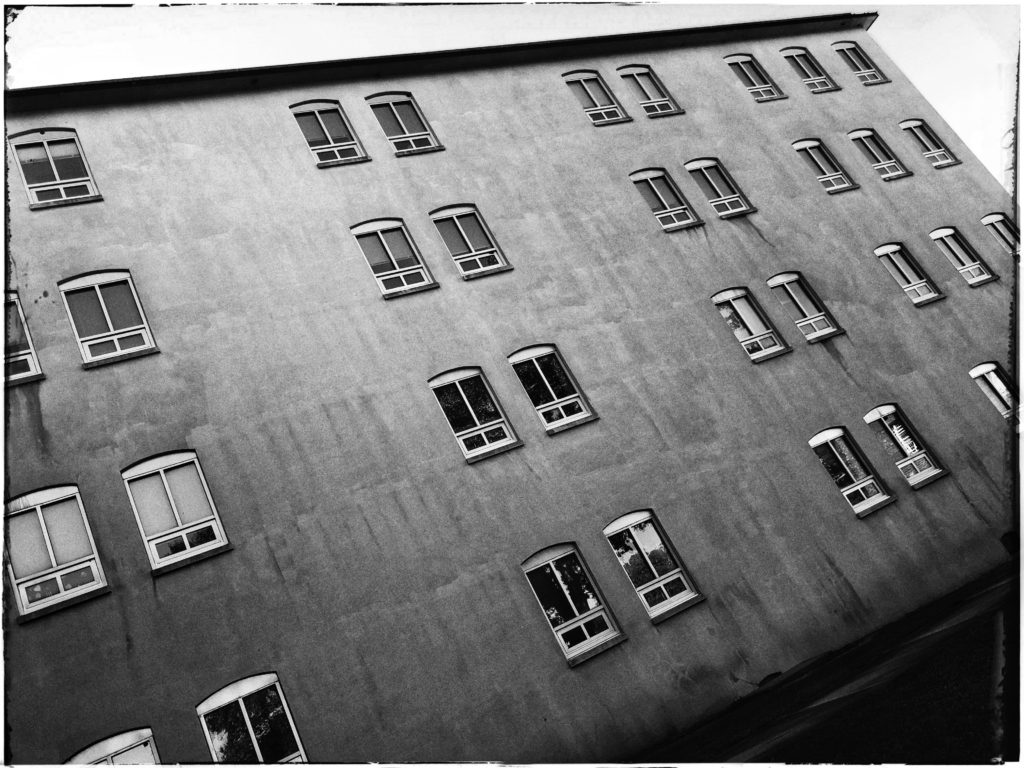
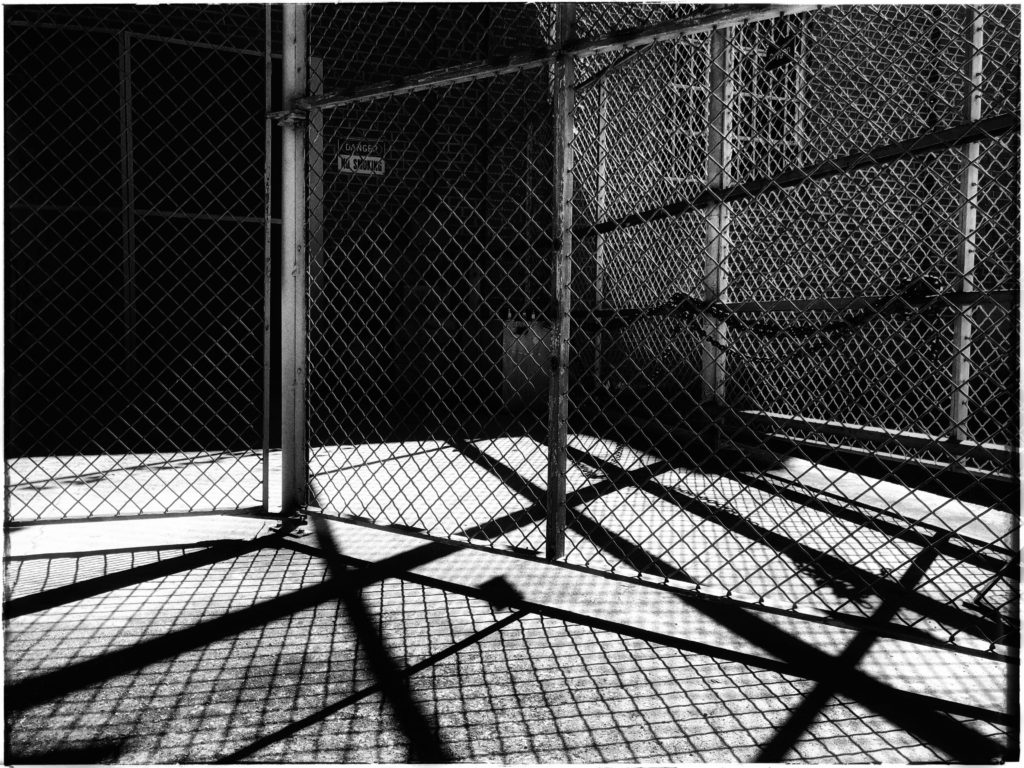

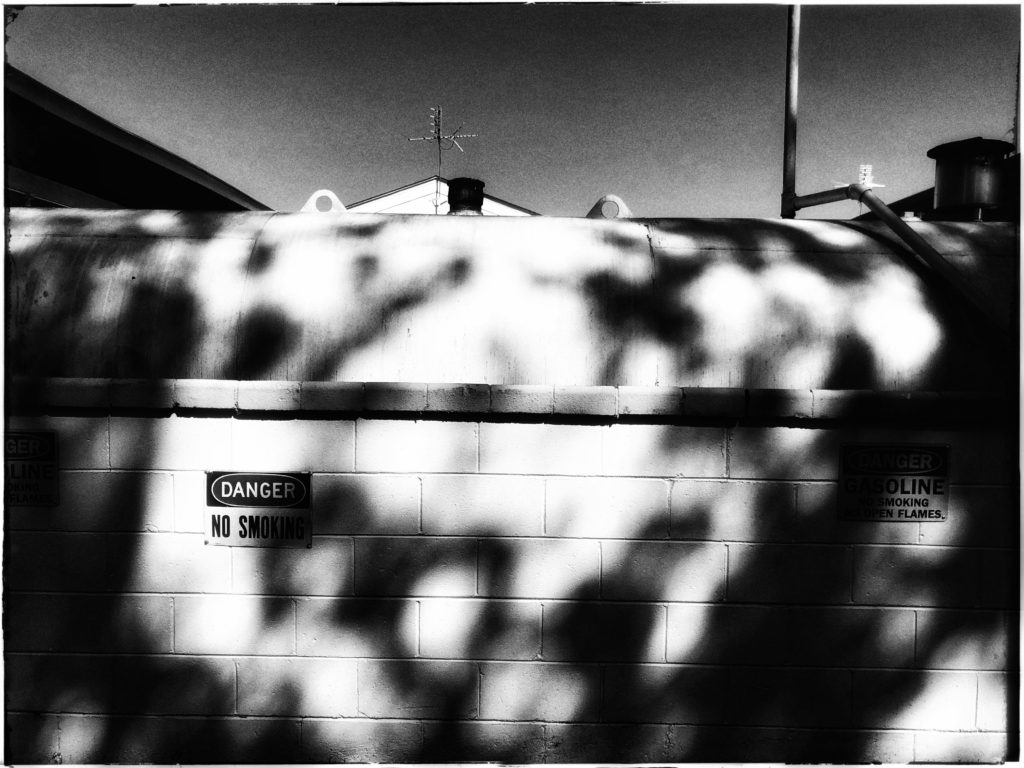
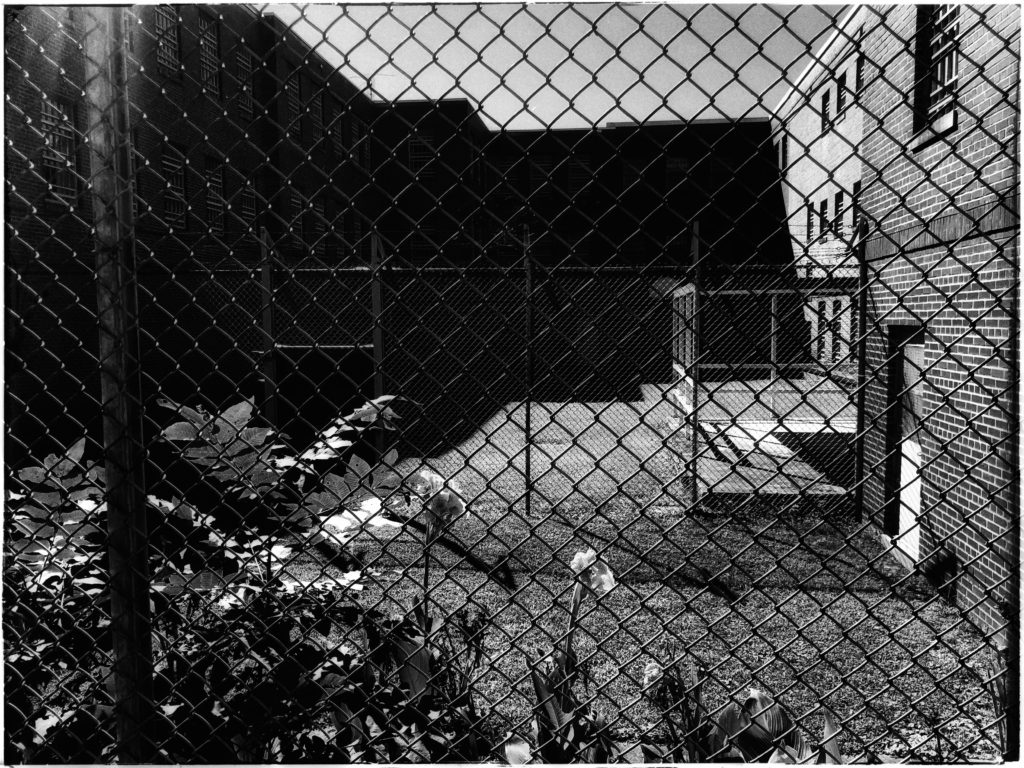
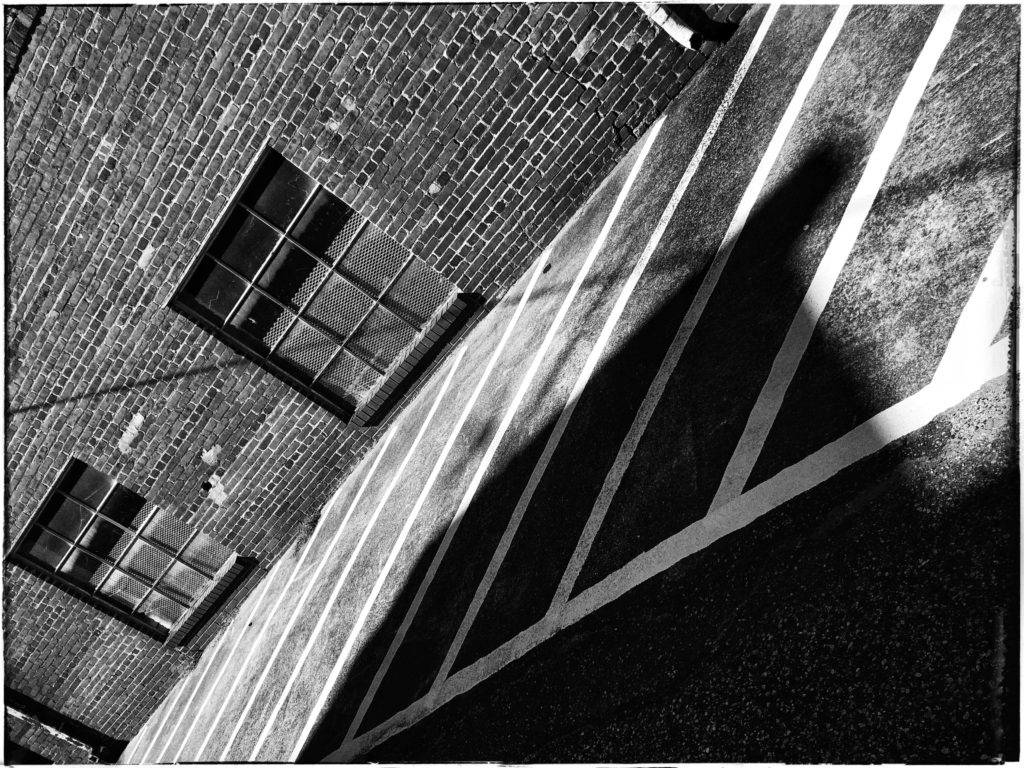


All photos taken with an iPhone 8 and processed in camera with Snapseed
Views: 16

Winogrand might have been losing it by the time he started not processing all those abandoned cassettes of film, but on the other hand, perhaps he finally got it right, that the buzz is in the shooting, and not so much in the afterwork.
Yeah, wandering around with a camera is certainly therapy for a broken heart, just as is listening to the blues and a lot of swamp pop rock. I’ve done a heap of both these past twelve years, but the picture-making comes with a problem: it forces me into sitting down too long in front of a screen, going through a routine I can almost do with my eyes shut. It brings responsibility, and that may or may not be helpful. I often think that perhaps I should just take the shots and leave it at that. But I can’t: I have to prove to myself that I can still do it, translate the shot into a fixture in the website. The thing’s become a bit of a monster, hungry as hell and far too far away from the supposed ideal of edit, edit, and then edit some more before you pour more stuff into public view. The idea of a kind of “best of” showcase hasn’t applied, almost from the second year of having the site: it’s turned into a handy repository, a place where almost every shot made finds a bed for the night. On the plus side, if I can’t find anything much better to look at before I hit the hay, then I go to those pictures and know I’ll feel sleepy before too long; maybe that’s good enough?
That gripe out of the way, there is a absolutely no doubt in my mind that carrying a camera turns on my optical bits. I look and see, whereas without one, I just go from here to there and back again, much as I drive, often wondering when I get home, how the hell I got there because not a thing about the drive sticks in my mind. Autopilot; a lot for which to answer.
I don’t think that I will ever again take to shooting with a cellphone; mine is years and years old, and has a whopping 5mp resolution. As mentioned in another thread here, that’s where the Q2 Monochrom may be a great idea. Like more contemporary cellphones, lots more pixies and the advantages those give you if you need to crop. Also handy, if I get the thing right, is that being as it is, the viewfinder shows you the image in black/white and you can see the effects of changing exposure settings right there on the screen as you alter things like aperture or shutter speeds. Which could be damned good for avoiding clipping of highlights, which, apparently, happens easily with that sensor.
Anyway, than God photography was invented; helped a lot of folks get through some bad times. Also, brought some friggin’ wonderful times too.
Rob
That is bordering on the uncanny Tim. I was going to write a comment on your previous piece “What is the Point” where I was planning to mention Winogrand’s famous quote, along with “the fact” that is all of those unprocessed rolls.
I have said in the past that I am not that bothered by other folk seeing my pictures, although I do not actively hide them either. This is possibly (nay likely) fear of having my feelings hurt, I am no Winogrand. To me, “the point” is the act of walking about, and psychologically forcing myself into the moment.
When driving, cycling etc., one is thinking about roadcraft and other anticipatory stimuli… Just by changing from driver to passenger (I frequently sit in the back as a passenger), whole new vistas open. Instead of the endless calculations that we make, even when walking, other senses come to the fore, such as that trick of the light that flickered in the corner of your eye, or a brilliant arrangement of shadow with shafts of sunlight. The camera gives me the opportunity to stop and take it all in… also to avoid bumping into people.
So for me, the point, is that the camera acts as a sort of mantra, I think that I see some wonderful compositions, and some of them I am ready to snap. However, the result is not that important.
My digital camera is the Leica M-D, so there is no chimp window, it handles just like a film camera. I have just sold both of my film Leicas’ having ruined my ability to produce decent digital copies of the negs. I keep spending money on scanning equipment, but my results get worse with each tweak. I have also not missed anything particularly wonderful that results, it has just become a pita.
I have decided to use film where digital is not a possiblity, like MF/LF pinhole photography, I really like the idea of contact printing in 8×10.
The reality of my photography is somewhat akin to the title of this piece “Walking the dog”, the dog/camera is a foil.
The real point is exercising the old infrastructure and quieting the mind.
The snaps get filed using a script that I found called “photo renamer”, and then the screensaver presents these snaps randomly.
Occasionally, someone might say, where was that? or that’s a nice picture, or what on earth were you trying to do there? But that is about as far as it goes.
I suppose that if I had a more developed eye, like my daughter, I might take “the work” more seriously.
As far as “æstheticism” is concerned, is that not just another word for “prejudice”, and isn’t that ability to choose, an essential tool for survival?
The fact that I carry a camera at all, relates to my world-view following lifesaving surgery. Once I recovered and realised that I was never going to be able to hold down a job again, I bought a Leica M2 and ran with Mike Johnston’s OCOLOY, even though I had always had a decent Yashica/Nikon/Olympus compact.
I also bought a Subaru P22, my one and only new car purchase, since I thought that I would be “late” within the ensuing few months, but that is a different story, and I am still here, champing at the bit, ready and willing to bore and annoy to order.
KBO Tim.
“Subaru P22” should read Subaru P1 of course, the 22b on which the P1 was based was and is, the stuff of fables. There is also some downright weirdness too, the moniker “22b” is in fact hexadecimal for “555” which was the number that their famous driver Colin McRae drove with.
Regarding scanners: when I was constructing my original version of the website, I had the remnants of some calendar shoots as well as returned stock images that were mostly scratched or marked with adhesive (which was surprising, as this surface damage was visible on images that had never been reported to me as having been leased out; in other words, I never collected any royalties on some of those things…), but anyway, the scanner: I bought myself a CanoScan FS 4000 US which I still have, and it worked wonderfully with all the 135 formats I scanned, including Kodachrome 64 Pro, which contrary to popular myth, scanned beautifully. For larger colour formats I copied against a Kodak lightbox, using a Nikon D200, and later D700, with a used 2.8/105 Micro-Nikkor that I’d bought, in perfect condition, from Grays of Westminster. I think they are a wonderful shop, and almost reason enough for living in London, which I don’t. One granddaughter does, but she’s a lawyer, so that explains why she can where I cannot.
Downsides to scanning, for me, reside mainly in the time that it takes to get anything done. The more I shoot digitally the less likely that I will ever use film again. It just feels like being contrary for its own sake. More fun doing that with words, because often they turn into a ping-pong game which, unlike scanning, can at least raise the blood somewhat.
Scanning technique? As straightforward as it can be, whithout playing around with histograms or curves or anything else on the scanner, leaving all those kinds of tweaks to Photoshop. And that was with a PS version that dated back to PS 6!
Hard work? Yeah, spotting all those new files. And that’s the best reason to forget film, apart from the fact it’s so expensive these days and nothing I do anymore warrants that kind of spend.
“As far as “æstheticism” is concerned, is that not just another word for “prejudice”, and isn’t that ability to choose, an essential tool for survival?” … Stephen J
Surely, your sense of aesthetics is the base from which you select your tools for said survival? I am not sure that employing those devices smacks of prejudice, but more of an educated guess as to what will serve you best. Without such a toolbox you have no point of departure, as a certain Mr R. Gibson might say.
Rob
Tim, I have read in a recent book the idea that Winogrand was the first digital photographer: he had fully adopted the aesthetics of today’s digital images, where capturing something is more important than conforming to any pre-existing aesthetic sense (golden ratio, etc, etc). The photograph is the event. It’s ‘numeriquement argentique’… whereas the people using digital cameras (not cellphones) with viewfinders that you look through are taking ‘digital film photographs’ — it is still the aesthetic of film, even if it is digital. Only the act of taking a photograph with a cellphone, where you look at the phone instead of through a viewfinder, is a true digital photograph…
Speaking of books, I have a book for you! Send me an email with your address.
Tim, I have read in a recent book the idea that Winogrand was the first digital photographer: he had fully adopted the aesthetics of today’s digital images, where capturing something is more important than conforming to any pre-existing aesthetic sense (golden ratio, etc, etc). The photograph is the event. It’s ‘numeriquement argentique’… whereas the people using digital cameras (not cellphones) with viewfinders that you look through are taking ‘digital film photographs’ — it is still the aesthetic of film, even if it is digital. Only the act of taking a photograph with a cellphone, where you look at the phone instead of through a viewfinder, is a true digital photograph…
Speaking of books, I have one for you! It’s all wrapped up, but I don’t have your address. send me an email !
There may be two reasons to still use film at this stage in the game:
1. you can produce a look that digital cannot yet convincingly do;
2. you like to use the cameras.
Aesthetically, there’s very little I can’t do with my little Leica CL that my M2 can do better, and my CL certainly does things that would be very difficult to do on film.
And my recent acquisition of a used Hasselblad X1D has taken all the wind out of my 500cm’s sails. The files are astonishing. As much as I enjoy that camera, I feel little compulsion to load up those A12 magazines at this point.
It’s a good time to take pictures.
Part of the charm of the 500 Series was simply in owning one, that as a sort of confirmation to yourself that so far, so good, you were probably doing okay in a world where you were/are only as good as your last gig. Then, it was the pleasure of the prism finder that really made that screen come to life. The view in it was so much more impressive than anything one saw in 135 format cameras.
Unfortunately, all of that turned sour when you went outdoors and tried to use it with the ease of a tlr… you discovered things such as camera bounce, but never as bad as what I’m told was the early Bronica experience, where the thing could apparently leap right off tables, all by itself! 🙂
Rob